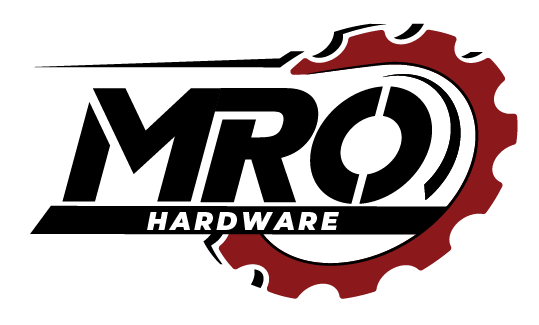In the ever-evolving landscape of maintenance, repair, and overhaul (MRO) supply chains, technology plays a crucial role in enhancing operational efficiency and driving market growth. As we look ahead to 2030, digital technologies continue to reshape how we manage global MRO operations. These advancements are not just beneficial; they are essential in optimizing processes, reducing costs, and ensuring the timely availability of parts and services.

Our journey into the digital era brings forward numerous innovations that streamline MRO processes. From AI-powered systems that predict equipment needs to blockchain solutions that promise secure and transparent transactions, technology is revolutionizing the way we approach maintenance and repair tasks. The future of MRO is a global endeavor, and embracing these technologies is vital for staying competitive in the years to come.
The shift toward digitalization is not without its challenges, but the potential it holds for revolutionizing MRO supply chains is undeniable. As we explore this transformation, we will uncover how technology not only supports but also drives the future of maintenance and repair services. By leveraging these tools, we stand to improve efficiency and meet the demands of a dynamic and growing market.
Innovative Technologies Transforming MRO

In the rapidly evolving world of Maintenance, Repair, and Overhaul (MRO), emerging technologies play a crucial role in enhancing efficiency and reliability. This transformation is led by IoT, AI, AR, VR, and blockchain, which redefine processes and ensure stronger cybersecurity measures.
Internet of Things (IoT) and Predictive Maintenance
IoT devices are essential in modernizing MRO operations. They enable real-time condition monitoring by collecting data through connected sensors and devices. This constant flow of information allows us to predict when equipment is likely to fail, which is a cornerstone of predictive maintenance.
Such predictive strategies reduce unexpected downtimes and maintenance costs. IoT devices communicate, providing a comprehensive view of equipment health. This ensures we make informed decisions based on data-driven insights, enhancing overall operational efficiency. Leveraging IoT ultimately leads to a more proactive approach to equipment maintenance.
Data Analytics and Artificial Intelligence (AI)
Big data and AI are revolutionizing how we handle maintenance data. By analyzing vast amounts of information, AI can identify patterns and predict potential failures before they occur. This capability enhances reliability and safety across MRO processes.
Data analytics helps us optimize maintenance schedules, reducing unnecessary interventions. Through AI-driven insights, we gain clarity on emerging trends and potential issues. This strategic use of data not only improves efficiency but also extends the lifecycle of assets, fostering sustainable maintenance practices.
Augmented Reality (AR) and Virtual Reality (VR)
AR and VR technologies are reshaping training and maintenance in MRO. Using AR glasses, maintenance workers can overlay digital information onto physical objects, providing step-by-step guidance and enhancing accuracy. This real-time assistance speeds up complex repair tasks and reduces errors.
VR offers immersive training environments where technicians can practice scenarios without physical risks. Both AR and VR play a pivotal role in improving safety and skill development, allowing us to simulate various situations. These technologies ensure our teams are well-prepared and efficient.
Blockchain and Cybersecurity in MRO
Blockchain technology enhances transparency and security in MRO supply chains. By providing a decentralized and immutable ledger, it ensures that data integrity is maintained across the board. This fosters trust among stakeholders and streamlines transactions.
In terms of cybersecurity, blockchain introduces robust defenses against cyber threats, safeguarding sensitive maintenance data. By implementing advanced technologies like blockchain, we achieve secure and reliable operations. Protecting data integrity is vital in today’s digital landscape, and blockchain is a key player in this domain.
Strategic Implementation and Industry Impact
Technology is pivotal in shaping MRO supply chains. It affects market trends, helps maintain regulatory standards, and boosts operational efficiency. Let’s explore how these factors play a crucial role in modern MRO strategies.
MRO Market Dynamics and Forecast
The MRO market is growing quickly, with technology playing a big role. Digital twin technology, for example, is helping us simulate and troubleshoot before actual maintenance even starts. We’re seeing a significant Compound Annual Growth Rate (CAGR) driven by these advancements.
Also, forecasting these changes helps us better allocate resources and manage costs. By anticipating market shifts, we’re more prepared to meet growing demands efficiently.
Sustainability and Regulatory Compliance
We recognize the importance of sustainability and meeting regulatory compliance. Efforts in these areas often include adopting energy-efficient practices and replacing or retrofitting outdated equipment. Such measures allow us to reduce our carbon footprint while adhering to strict industry regulations.
Wearable technology and smart sensors contribute to monitoring these efforts, ensuring we’re always compliant with rules and promoting sustainable practices. Our adherence to these standards not only protects the environment but often results in long-term cost benefits.
MRO Integration, Efficiency, and Productivity
Integration of new technologies is transforming our productivity and efficiency. Through improved MRO software solutions, such as advanced inventory management tools, we streamline workflows and tasks.
Preventive maintenance, supported by robotics and wearables, offers cost-effective solutions, minimizing downtime. By focusing on these innovations, we enhance not only our operational success but also deliver better service to our clients in the aviation industry and beyond.

